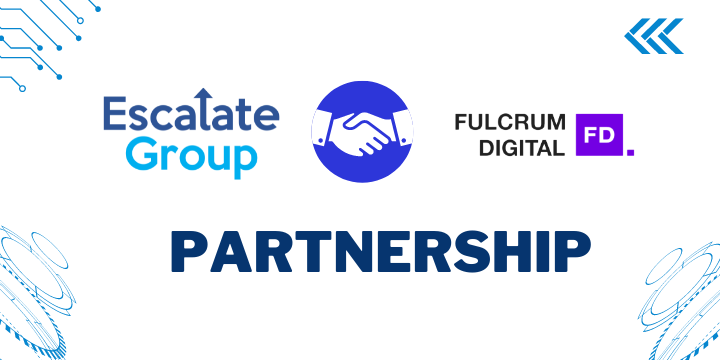How the GENIUS Act 2025 and Stablecoins Are Reshaping Enterprise Finance
September 15, 2025

The GENIUS Act 2025 marks a turning point in digital finance. Stablecoins are now programmable, compliant dollars unlocking real-time treasury, payments, and global operations. Here’s what business leaders need to know.
Introduction:
The financial system is experiencing a foundational shift. With the enactment of the GENIUS Act 2025, stablecoins once associated mainly with crypto speculation—are now recognized as compliant, programmable digital dollars designed to operate within the fabric of enterprise finance.
This transformation is not a tech trend; it is a restructuring of financial infrastructure. And the question for today’s business leaders is no longer if stablecoins will matter, but how to seize their strategic advantage.
The GENIUS Act: Policy Meets Possibility
The Guiding and Establishing National Innovation for U.S. Stablecoins (GENIUS) Act 2025 offers the first comprehensive federal framework for U.S. dollar-backed stablecoins. It mandates 1:1 reserve backing in cash or U.S. Treasuries, oversight by licensed issuers, and strict audit standards.
More significantly for the enterprise, the law affirms that compliant stablecoins are not bank deposits or securities and can be used as regulated financial instruments for payments and treasury.
According to Coindesk, the GENIUS Act is projected to drive a $25 to $75 billion surge in stablecoin supply, unlocking adoption by corporates, financial institutions, and governments alike.
This shift supports the vision outlined in Escalate Group’s where Web3 Digital Capital Innovation Studio,programmable liquidity becomes a foundation for business agility and financial innovation
Where Opportunity Meets Urgency
Regulatory clarity is catalyzing institutional momentum. Stablecoin transaction volume surpassed $27 trillion in 2024, exceeding the combined total of Visa and Mastercard. Analysts from Bloomberg, ARK, and Citi expect the stablecoin market to reach $2–3.7 trillion by 2030.
As Reuters reports, the U.S. Treasury anticipates that stablecoins could become one of the largest holders of government debt by 2028, with projected reserve demand approaching $2 trillion.
A 2025 report by Fireblocks found that 90% of institutions are already building stablecoin infrastructure, with over 70% of enterprises in Latin America using or piloting stablecoin payments.
Strategic Use Cases by Industry
Retail
Retailers are moving toward programmable loyalty systems and faster global payouts.
- USDC is being used to pay international suppliers and creators in real time
- Cashback and loyalty programs are being replaced by closed-loop digital dollars.
- Smart payments are being triggered by inventory and order data
Telecom
Telecoms are emerging as natural pioneers of stablecoins thanks to their infrastructure and global footprint.
- Cross-border roaming and wholesale settlements are happening in stablecoins.
- Prepaid customers gain real-time top-ups and micro-remittances
- Zeebu and other Web3-native telco platforms are already live in LATAM and MENA
This aligns with Escalate Group’s Telecom + Stablecoin strategy briefing that explores wallet integration, AI risk scoring, and programmable identity layers.
Manufacturing
Manufacturers are streamlining liquidity across global supply chains.
- Treasury teams are adopting stablecoins for intercompany transfers
- Tokenized trade finance enables faster access to working capital
- Smart contracts are automating invoice validation and supplier payments
Healthcare and Fintech
- Health platforms are testing real-time insurance disbursements
- Fintechs are using programmable dollars for gig economy payouts, rewards, and embedded finance
- Identity-linked stablecoins are powering compliance and tax reporting
Why This Matters Now for the C-Suite
For CFOs, stablecoins unlock real-time liquidity, cross-border cash movement, and yield optimization through tokenized Treasuries. For COOs, they enable automation of settlement, compliance, and treasury execution.
For CEOs and innovation leaders, programmable money enables new digital services, from customer rewards to machine-to-machine commerce.
By combining programmable money with AI insights, leaders can move from reactive finance to predictive intelligence, as outlined in Escalate Group’s AI Transformation programs.
These are not speculative gains. They are measurable ROI outcomes: faster payments, reduced fees, decreased float, and improved visibility.
Escalate Group’s Role: From Readiness to Execution
Escalate Group works with executive teams to move from insight to impact. Our offering includes:
- Stablecoin Readiness Briefings to identify near-term opportunities
- Strategic Sprints to design and validate enterprise pilots
- Execution Support to ensure compliance, integration, and scalability
We are actively engaging with infrastructure leaders to provide our clients access to secure, regulatory-ready stablecoin systems that deliver operational and financial value.
Conclusion: What Comes Next, Leadership in a Tokenized Economy
GENIUS Act 2025 is not just policy. It is a financial infrastructure signal. The organizations that act now, testing pilots, building workflows, upgrading treasury will shape tomorrow’s standards.
Executives are already assembling internal teams. Boards are exploring how tokenized liquidity can drive returns. Digital capital strategy is moving from R&D into operations.
This is the beginning of a broader transformation, where money moves at the speed of logic, not bureaucracy.
To learn how your company can explore this transformation with strategic clarity, connect with us at Escalate Group or request a Stablecoin Readiness Briefing.
The infrastructure is ready. The regulation is here. The leadership opportunity is yours.
“Let us help you make programmable finance real for your business.”





